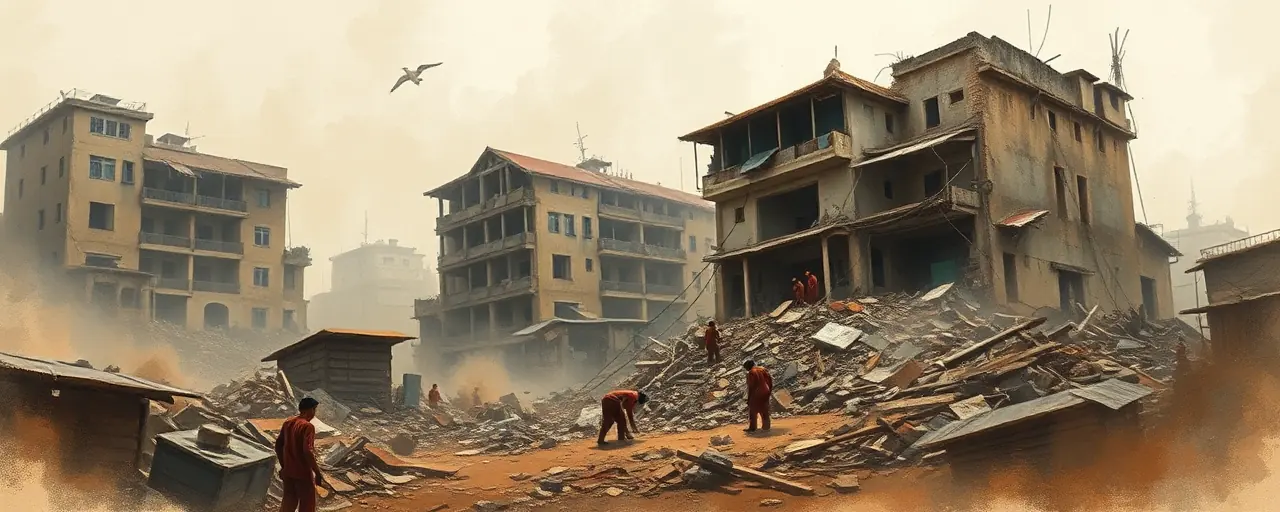A Devastating Blow to an Unstable Region
A powerful 7.7 magnitude earthquake ripped through central Myanmar on March 28, 2025, leaving a trail of destruction that has stunned an already fragile nation. Over 3,300 people have lost their lives, thousands remain injured or missing, and more than 3 million are displaced, grappling with the collapse of homes, hospitals, and roads. The disaster struck at a time when Myanmar was already reeling from a brutal civil war, amplifying the chaos and desperation in regions like Mandalay and Sagaing.
The international response was swift. Governments and aid groups voiced solidarity, with the United States, Australia, India, and Japan - collectively known as the Quad - issuing a joint statement on April 3, extending condolences and pledging over $20 million in humanitarian assistance. Yet, beneath the promises of relief lies a stark reality: delivering help to those who need it most is proving to be a logistical and political nightmare.
Aid on the Ground: A Race Against Obstacles
The Quad’s commitment includes emergency medical teams, relief supplies, and support for local partners working tirelessly in Myanmar. A coordination group, tied to the Quad’s Humanitarian Assistance and Disaster Relief Partnership, is collaborating with the ASEAN Coordinating Centre for Humanitarian Assistance to streamline efforts. ASEAN, the regional bloc of Southeast Asian nations, has also stepped up, issuing statements on March 29 and 30 urging temporary ceasefires to allow aid through.
But the ground tells a different story. Myanmar’s military junta, locked in conflict with ethnic armed groups since the 2021 coup, has restricted access to opposition-held areas, even as it announces partial halts in fighting. Reports point to over 50 attacks, including airstrikes, since the earthquake, shattering hopes of a safe path for aid convoys. Damaged infrastructure only adds to the strain, leaving relief workers scrambling to reach isolated communities.
A Region’s Resilience Tested
ASEAN’s role in disaster response has grown since the devastating 2004 Indian Ocean tsunami and 2008 Cyclone Nargis, with frameworks like the Agreement on Disaster Management and Emergency Response guiding its efforts. The group’s Vision 2025 pushes for a united, resilient region, but progress varies. Wealthier member states often outpace poorer ones in resources and readiness, and the Myanmar crisis exposes how much ASEAN leans on outside help, like the Quad, for muscle in massive emergencies.
Local voices, meanwhile, are fighting to be heard. Grassroots organizations in Myanmar have turned to informal networks, dodging official roadblocks to deliver food, water, and medical kits. Their work highlights a gritty determination to survive, but it’s a drop in the bucket against the scale of need. Over 28 million people - nearly half the country’s population - are caught in the earthquake’s fallout, many without basics like clean water or shelter.
Global Players and Quiet Tensions
The Quad’s involvement isn’t just about aid; it’s a piece of a bigger puzzle. Born from the 2004 tsunami response, this partnership has evolved into a steady hand in Indo-Pacific crises, pitching itself as a force for stability. By focusing on humanitarian relief rather than flexing military might, the group sidesteps prickly geopolitical nerves, particularly with China’s watchful eye on the region. Its tie-up with ASEAN signals a practical alliance, not a power play.
Still, questions linger about how far this cooperation can stretch. The Quad’s $20 million pledge is a solid start, but Myanmar’s political mess - a junta accused of blocking aid to punish rivals - tests the limits of what money and goodwill can achieve. Some analysts see the Quad’s moves as a soft counter to China’s regional sway, though its leaders frame it as a shared commitment to a free and open Indo-Pacific.
What Lies Ahead for Myanmar
The earthquake has laid bare Myanmar’s wounds, piling a natural disaster onto a humanitarian crisis years in the making. The Quad and ASEAN have rallied, and their coordination offers a glimmer of hope for structured relief. Yet, the junta’s grip, fractured ceasefires, and wrecked infrastructure keep aid from flowing freely. Local groups and international agencies alike are stretched thin, racing to fill gaps that widen by the day.
For people new to this tangled web, the takeaway is simple but brutal: millions in Myanmar are suffering, and the world’s best intentions are hitting hard limits. The road to recovery will demand more than cash and supplies; it’ll take a rare alignment of politics, logistics, and human resolve to pull a nation back from the edge.
